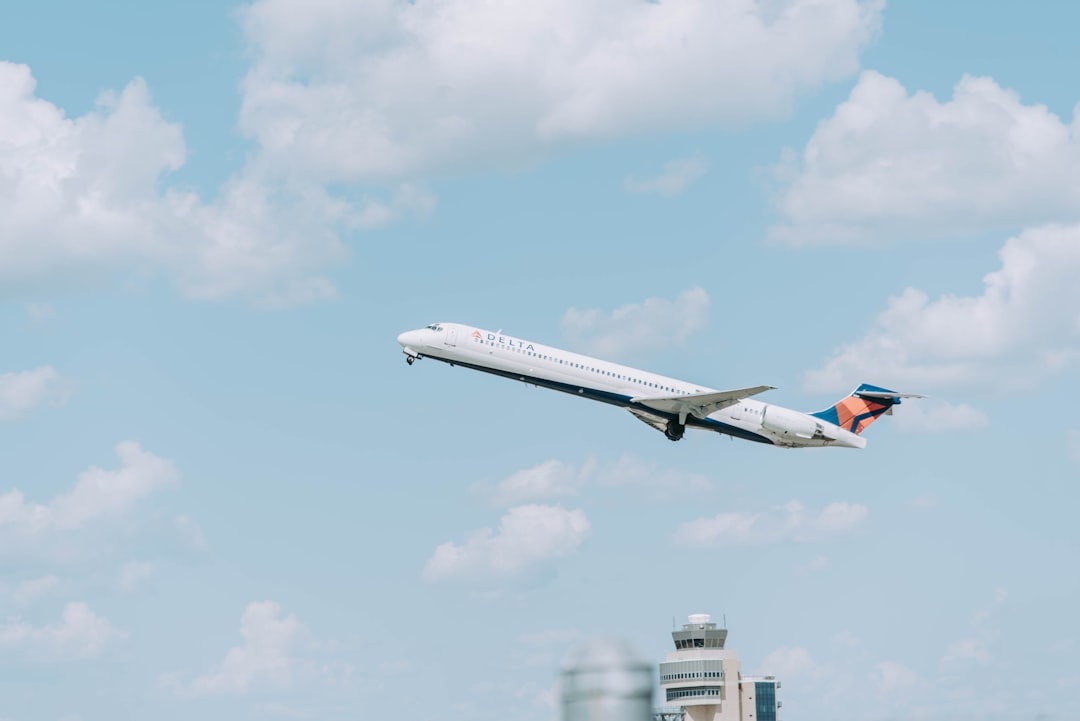(ATLANTA, GEORGIA) A Delta Air Lines flight from Los Angeles to Atlanta executed a go-around maneuver Tuesday morning after encountering strong winds on approach to Hartsfield-Jackson International. The pilots discontinued the first landing to maintain safety and circled for a second try. The aircraft then landed without incident on the next approach.
Delta confirmed the go-around occurred during the morning arrival but did not provide wind speeds or the exact time. The airline said the aircraft completed the second landing safely, matching standard procedures for unstable or unsafe landing conditions.

What a go-around is and why crews use it
A go-around is a routine safety step pilots use when an approach no longer meets safe limits. In this case, the flight crew followed training by choosing not to continue an approach affected by strong winds.
This decision reflects caution, not danger. Flight crews practice this sequence often, and air traffic control expects it when weather or approach stability does not meet safety rules. According to analysis by VisaVerge.com, go-around decisions are a normal element of airline safety culture aimed at keeping passengers and crew safe.
Common triggers for a go-around
- Wind shear or unstable winds that change speed or direction near the runway
- Poor visibility that hinders a stable visual or instrument approach
- Runway obstructions, such as an aircraft or vehicle still on the runway
- Unstable approach paths, including speed or configuration outside safe limits
In Tuesday’s case, strong winds on approach to Hartsfield-Jackson International drove the decision. Delta reported no injuries; the aircraft flew a second pattern and landed safely.
How go-arounds work in practice
While a go-around can feel abrupt from a cabin seat—engines surge, the nose rises, and the aircraft climbs away from the runway—it reflects careful planning. Crews brief this action before every landing and follow a standardized procedure:
- Announce and apply go-around power
- Pitch to the published climb attitude and maintain required speeds
- Retract flaps/gear as appropriate per checklist
- Communicate with and follow vectors from air traffic control for a second approach or diversion
Go-arounds are not emergencies; they are controlled steps in the landing process built into standard operating procedures across airlines and aircraft types.
Impact on passengers and operations
For travelers, including families and business flyers connecting through Atlanta, a go-around usually adds only a short delay. Most flights proceed to a second landing without schedule changes. Cabin crews often announce the reason as weather-related and remind passengers that the decision is routine.
Passengers will typically notice:
– Increased engine noise and a climb away from the runway
– Possible retraction of landing gear
– A holding pattern or vectors for another approach
Air traffic controllers at a busy hub can handle these events without major disruption. Traffic spacing can be adjusted, and other aircraft can be instructed to slow or hold briefly. Hartsfield-Jackson’s multiple runways and high-capacity taxi network help absorb these shifts.
Weather context at Hartsfield-Jackson
Atlanta’s airport has faced repeated weather challenges in recent months. Severe storms earlier this year strained schedules, exposed aircraft to hail, and forced large-scale operational checks. Those episodes included:
- Heavy rain and high winds prompting flash flood warnings
- A temporary evacuation of an air traffic control tower
- Hundreds of flight cancellations and inspection of more than 100 Delta aircraft for potential hail damage
Tuesday’s strong winds on approach add another example of how quickly weather can alter airport operations.
Safety takeaway and resources
The safety logic behind a go-around is simple: land only when the approach is stable—on path, at the right speed, and in the correct landing configuration—through a set height above the runway. If any part of that picture drifts outside limits, pilots climb away, reset, and try again.
For general reference on standard flight procedures, see the Federal Aviation Administration’s public resources at the Federal Aviation Administration.
For Tuesday’s Delta flight, the key points are:
– The initial approach was discontinued due to strong winds.
– The crew completed a go-around maneuver according to standard training.
– The aircraft landed safely on the second attempt, as expected under these procedures.
According to VisaVerge.com, pilot decision-making in such moments centers on safety margins, not schedule pressure. The procedure may add minutes to a flight, but it supports the larger goal of safe, stable landings at Hartsfield-Jackson International. That is why the go-around remains a routine part of flight operations—and why Tuesday’s Delta flight, faced with strong winds, circled once and arrived safely on the second attempt.
This Article in a Nutshell
A Delta Air Lines flight from Los Angeles executed a go-around at Hartsfield-Jackson International after encountering strong winds on its initial approach. Pilots discontinued the first landing to maintain safety, climbed away, and followed standard go-around procedures before completing a safe second landing. Delta confirmed the event but did not disclose wind speeds or exact timing. Go-arounds are routine safety responses to unstable approaches—triggered by factors like wind shear, poor visibility, or runway obstructions—and typically add only minor delays. The incident underscores the role of crew training, air traffic control coordination, and airport infrastructure in handling weather-related disruptions at busy hubs like ATL.












